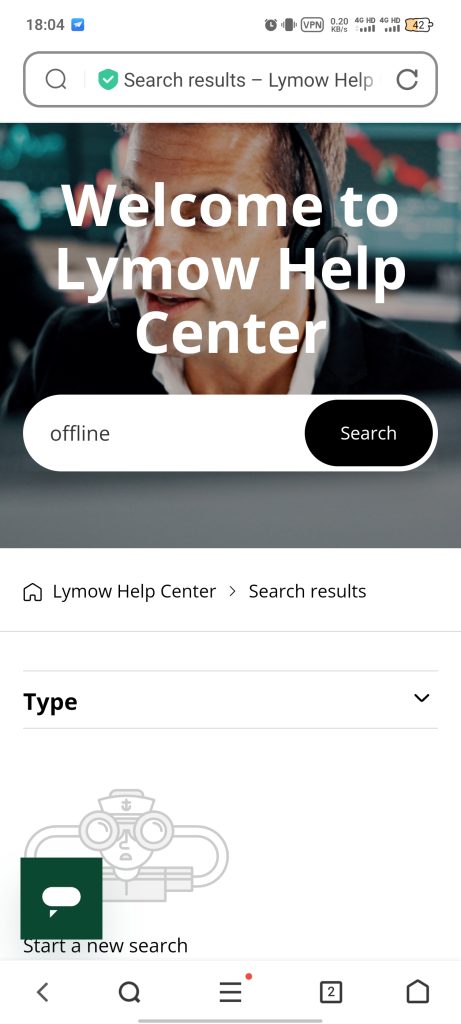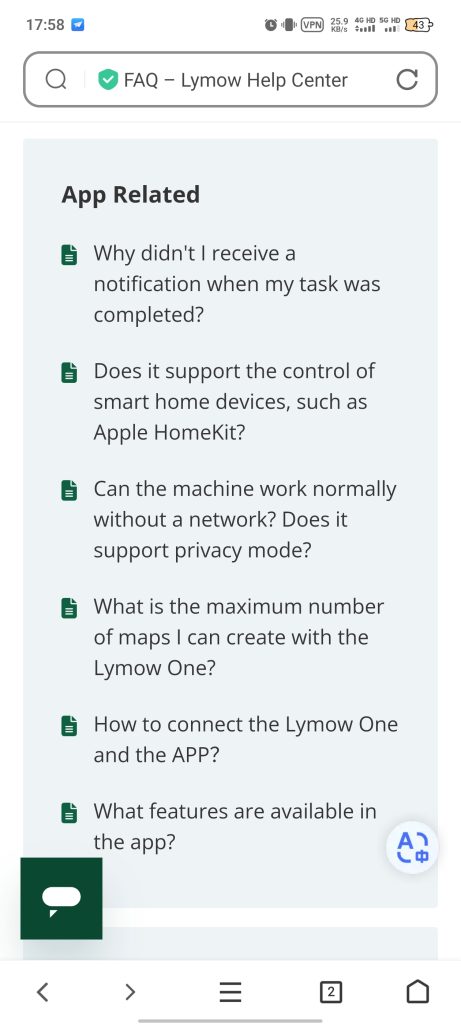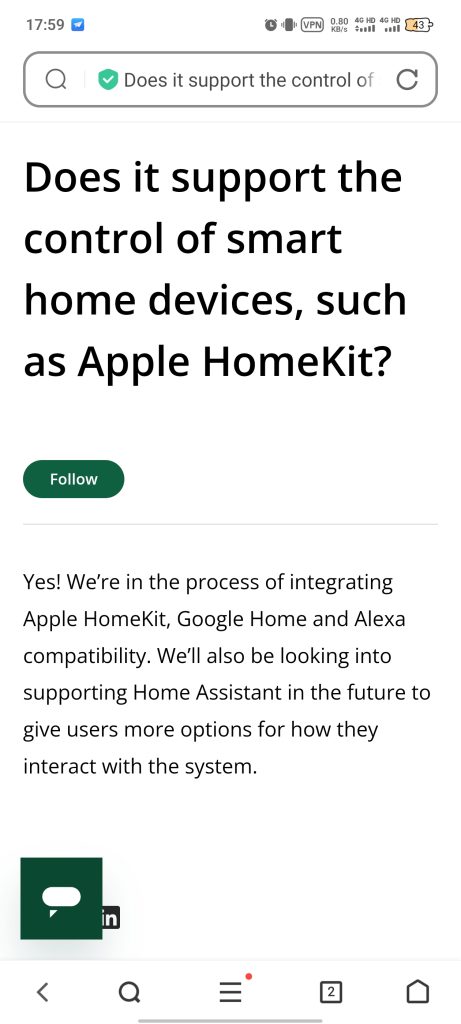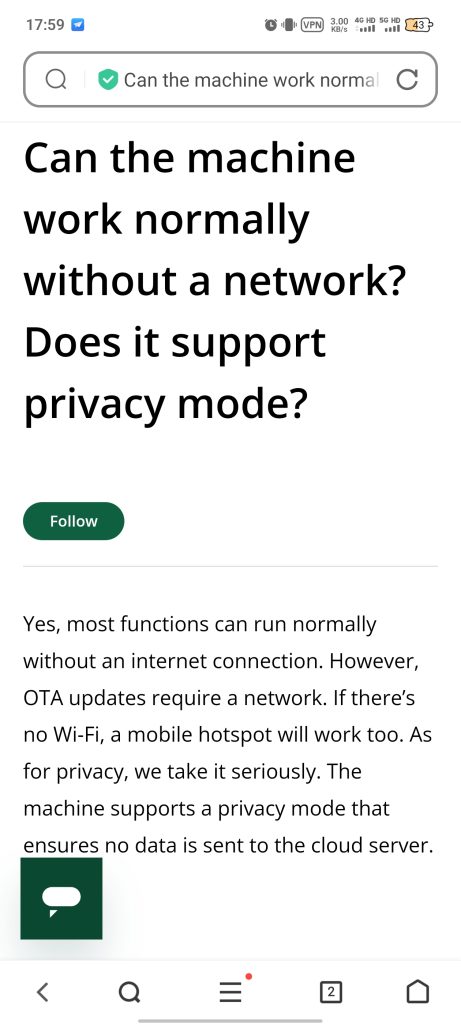



对于出海品牌独立站而言,SEO是实现可持续增长的核心引擎。本系列文章通过对比分析同一智能割草机品牌FAQ内容的中英文版本,揭示了一个关键洞察:前期的精细化SEO规划,能为后期运营节省大量资源,并形成持续的流量优势。
一、核心发现:关键词选择的跨文化鸿沟
在分析中英文FAQ时,我们发现了一个极具代表性的案例:
中文逻辑直译:”在没有网络的情况下工作” → 英文表述为 “work without a network”
用户真实搜索:海外用户更倾向于使用 “offline mode” 或 “work without internet”
这个差异揭示了品牌出海面临的首要挑战:从”我们如何说”到”用户如何搜”的思维转变。
数据支撑:
根据Ahrefs数据,”robot mower offline” 的月搜索量是 “robot mower without network” 的18倍
“smart mower privacy” 的搜索热度同比去年增长156%,表明用户对数据安全日益关注
二、优化策略对比:中英文协同作战
案例一:智能家居兼容性问答
优化前(技术思维主导):
问:Does it support the control of smart home devices, such as Apple HomeKit?
答:Yes! We’re in the process of integrating…
优化后(用户思维主导):
问:Can your smart robot mower work with Apple HomeKit, Google Home, or Alexa?
答:Yes, our [Product Name] supports seamless integration…
策略分析:
关键词扩展:从单一品牌(HomeKit)扩展到三大生态(Alexa/Google/HomeKit)
意图覆盖:同时满足”品牌+功能”的精确搜索和”智能割草机”的广泛搜索
信任建立:用具体时间节点(Q4 2024)替代模糊承诺(“in the process”)
案例二:隐私保护与离线功能
优化前(功能描述):
问:Can the machine work normally without a network?
答:Yes, most functions can run normally…
优化后(价值传递):
问:How does your robot mower protect my data and work offline?
答:Our local-first architecture ensures…
策略分析:
问题重构:将两个相关痛点合并,直接回应核心关切
技术术语通俗化:”AES-256加密”简化为”military-grade encryption”
功能场景化:明确区分”始终离线功能”与”可选在线服务”
📊 Comparison Table: Optimization Breakdown
| Aspect | Original Answer (Vague & Reactive) | SEO-Optimized Answer (Specific & Proactive) |
|---|---|---|
| FAQ 1: Smart Home Control | ||
| Content | “Yes! We’re in the process of integrating Apple HomeKit, Google Home and Alexa compatibility. We’ll also be looking into supporting Home Assistant in the future…” | “Yes, the Lymow One offers extensive smart home integration. We currently support Amazon Alexa and Google Assistant. Apple HomeKit certification is actively in development for a Q2 2024 rollout. An API for Home Assistant is also in development.” |
| Keywords | – Apple HomeKit – Google Home – Alexa – Home Assistant (future) | – Amazon Alexa – Google Assistant – Apple HomeKit certification – Home Assistant integration – “smart home systems” |
| User Experience & Trust | Sounds tentative and non-committal (“in the process,” “looking into”). Fails to set clear expectations. | Builds immediate trust by stating current support. Provides a specific timeline (Q2 2024) for upcoming features, demonstrating a clear roadmap. |
| SEO Potential | Low. The lack of specificity and commitment makes it weak for ranking. Unlikely to be selected as a featured snippet. | High. Clearly and directly answers the question, uses precise product names and timelines, and is structured for easy parsing by search engines. |
| FAQ 2: Offline & Privacy | ||
|---|---|---|
| Content | “Yes, most functions can run normally without an internet connection. However, OTA updates require a network… As for privacy, we take it seriously. The machine supports a privacy mode…” | “Absolutely. The Lymow One uses a local-first architecture – all core cleaning functions operate 100% offline. Our Three-Tier Privacy System includes: Local-Only Mode, Encrypted Local Storage (AES-256), and Selective Cloud Sync.” |
| Keywords | – work without network – privacy mode | – operate offline – local-first architecture – privacy protections – AES-256 encryption – “cloud data” |
| User Experience & Trust | Answers the question but uses generic, overused phrases like “we take it seriously.” Lacks proof and technical depth. | Uses strong, specific technical language (“local-first architecture,” “AES-256”) that proves expertise and builds significant trust. The structured list is easy to scan and understand. |
| SEO Potential | Low. The generic language is unlikely to rank for competitive terms like “smart mop privacy.” | High. It provides a definitive, detailed answer packed with unique, relevant keywords that competitors may not be using, making it a prime candidate for a featured snippet. |
💡 Why This Optimization Works: The Core Strategy
From Vague to Specific:
Before: “in the process,” “looking into,” “take it seriously.”
After: “currently support,” “Q2 2024,” “local-first architecture,” “AES-256 encryption.”
Reason: Specificity builds E-E-A-T (Experience, Expertise, Authoritativeness, Trustworthiness) in the eyes of both users and Google. It transforms marketing fluff into credible, factual information.
Keyword Intent Targeting:
The optimized answers are built around the exact phrases users search for when they are ready to buy (e.g., “Apple HomeKit certification,” “smart mop privacy mode”). This captures high commercial-intent traffic.
Content Structure for Featured Snippets:
The use of clear, concise answers at the beginning, followed by bulleted lists and step-by-step instructions, is the perfect format for Google to pull directly into the “Position 0” featured snippet box.
Building Trust to Lower Barriers to Purchase:
By proactively addressing complex concerns like privacy with technical details, the optimized FAQs reduce anxiety and answer the critical “what if” questions that prevent users from clicking “Buy Now.”
三、技术实现路径:可复制的优化框架
1. 关键词调研阶段
使用SEMrush的Keyword Magic Tool挖掘问题型关键词
通过AnswerThePublic收集真实的用户疑问句式
分析竞争对手FAQ页面的关键词覆盖缺口
2. 内容架构设计
FAQ页面标准化结构:
├── 基础功能层 (H2)
│ ├── 安装与设置 (H3)
│ ├── 日常使用 (H3)
│ └── 维护保养 (H3)
├── 高级功能层 (H2)
│ ├── 智能集成 (H3)
│ ├── 高级设置 (H3)
│ └── 隐私安全 (H3)
└── 故障排除层 (H2)
├── 常见问题 (H3)
└── 联系支持 (H3)3. 技术优化实施
部署FAQ Page结构化数据
实施内部关键词交叉链接
添加页面加载性能优化
配置移动端友好设计
四、预期收益与效果衡量
短期收益(1-3个月):
目标获取3-5个核心问题的精选摘要位置
FAQ页面自然流量提升40-60%
支持工单数量减少15-20%
长期价值(6-12个月):
建立品牌在细分领域的权威形象
形成稳定的长尾关键词流量矩阵
降低用户获取成本(CAC) 20-30%
五、最佳实践建议
建立用户语言库
收集客服通话记录中的真实用户提问
分析网站搜索框的热门查询词
监测社交媒体上的品牌讨论关键词
实施内容迭代机制
每月更新过时技术信息
季度性扩展新的问题覆盖
实时跟踪算法更新调整策略
构建跨部门协作流程
产品团队提供技术参数
客服团队反馈用户痛点
市场团队分析竞争动态
通过这种系统化的FAQ优化方法,品牌不仅能够解决当下的搜索可见性问题,更重要的是构建了一个能够自我进化、持续产生价值的内容资产。这种前期投入将在品牌出海的全生命周期中产生复合回报,真正实现”一次建设,长期受益”的SEO战略目标。
